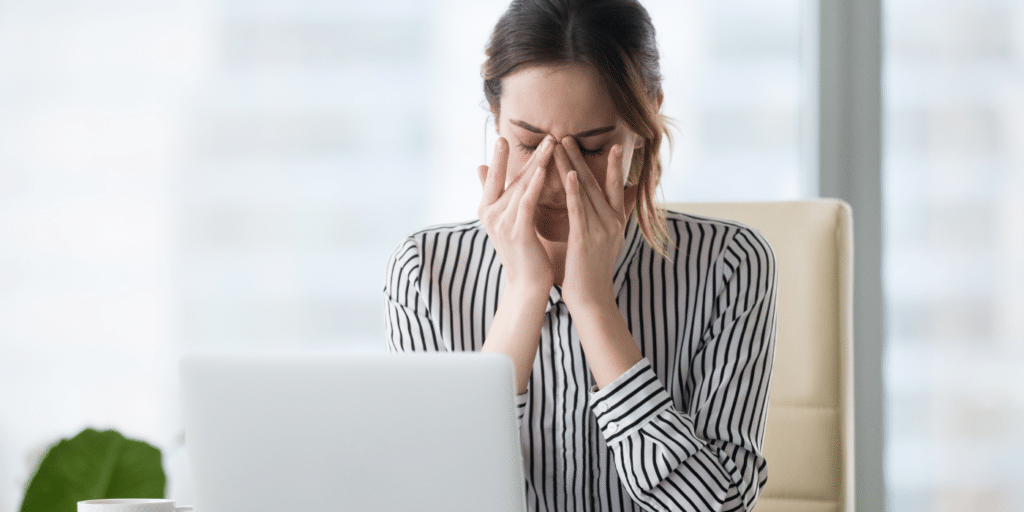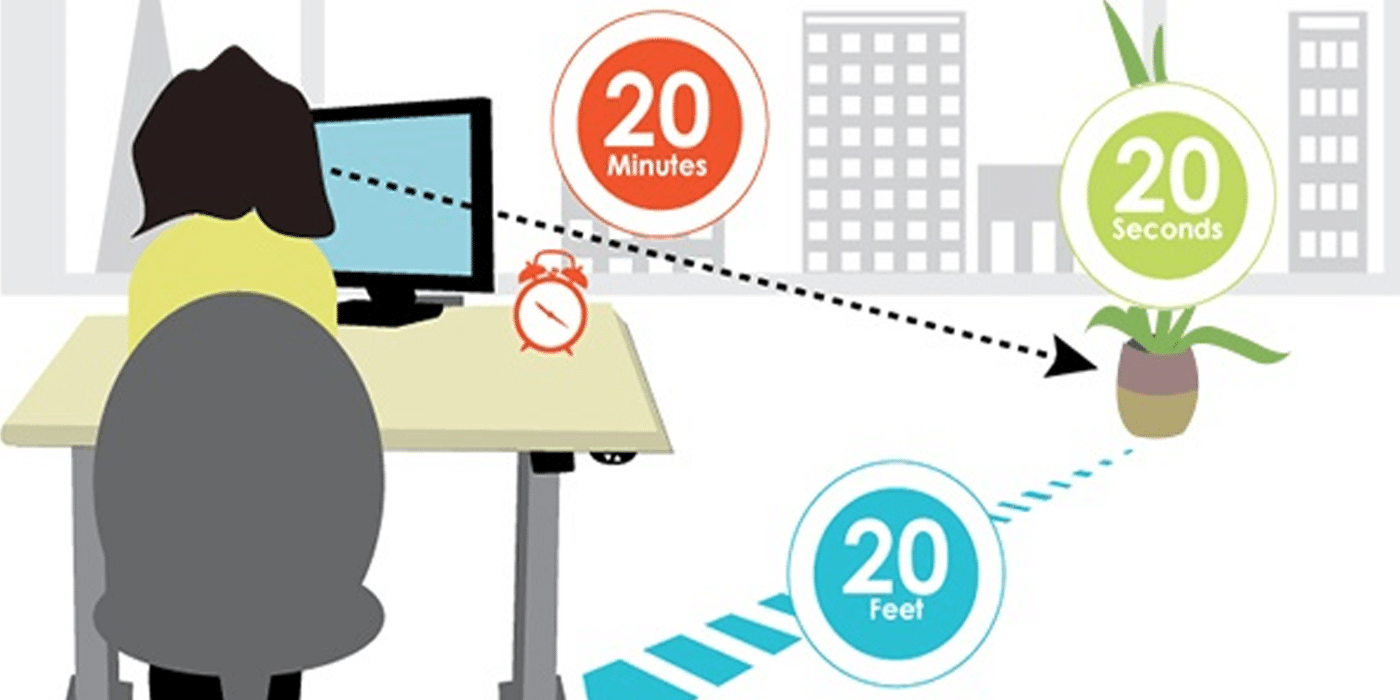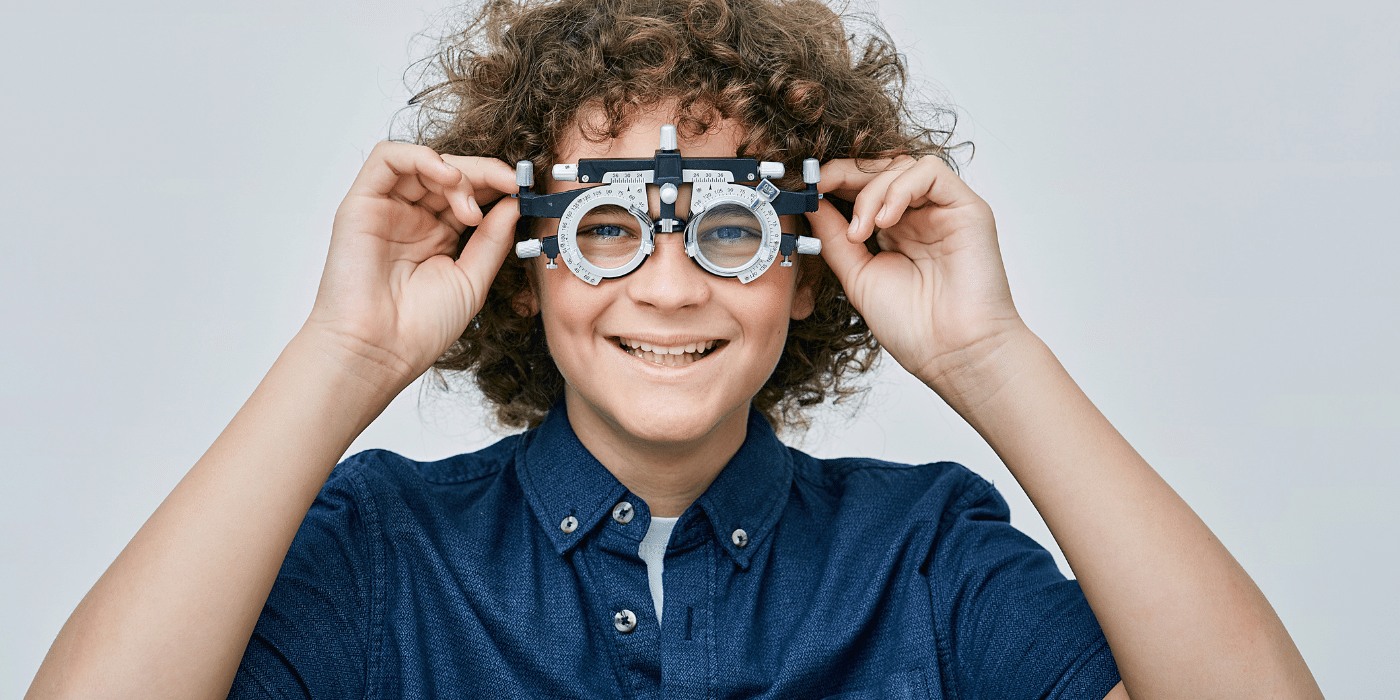
The 20/20/20 Rule: A Simple Solution for Digital Eye Strain
If you’re, well… anyone these days, you probably spend a significant amount of time looking at screens throughout the day. No matter where you’re going or what you’re doing, screens are rarely out of sight.
Need to find your way to a new location? There’s a screen for that.
Need to look up a recipe to cook dinner? There’s a screen for that.
Need to kill some time? There’s a screen for that.
Whether we’re in our home, in our car, at school, at work, or out to dinner, there’s probably at least one screen within eyesight.
Heck, our cell phones are basically pocket-sized computers, on our person every second of every day.
According to a study published in the Journal of Computer-Mediated Communication, the average person spends approximately 7 hours per day looking at screens.
That’s a lot of screen time.
Now we’re not villainizing screens. They add convenience, entertainment, and support to our daily lives. But too much screen time can have a headache-inducing side effect that can wreak havoc on our vision.
This side effect is digital eye strain.
Staring at a digital screen for prolonged periods of time causes strain on the eyes. Even short periods of time can affect our eyes. In fact, just two hours of screen time per day can increase the risk of developing digital eye strain.
A survey conducted by the Vision Council found that 59% of adults who regularly use digital devices experience symptoms of digital eye strain.
Digital eye strain, also known as computer vision syndrome, comes along with symptoms such as:
- Dry eyes
- Eye pain
- Eye fatigue
- Headaches
- Blurred vision
- Redness in the eyes
- Shoulder and neck pain
- Poor posture
The good news is, there’s an easy trick for minimizing the effects of digital eye strain and slowing the progression of related issues such as myopia (or nearsightedness), hyperopia (or farsightedness), and astigmatism. It’s called the 20/20/20 rule and we’re here to tell you how to implement it into your daily life.

What is the 20/20/20 rule?
The 20/20/20 rule is an easy trick for preventing digital eye strain. It states that for every 20 minutes a person looks at a screen, they should look at something 20 feet away for 20 seconds. It’s really that simple.
How can I incorporate the 20/20/20 rule in my daily routine?
As simple as the 20/20/20 rule is, the fact of the matter is that we all get sucked into our screens and time flies by while we’re working, binging Netflix, or scrolling on our phones.
Luckily, there’s a screen for that.
We suggest downloading one of the timer apps from the App Store, like Eye Saver or Eye Care 20 20 20, which were created for this exact situation. Open the app whenever you plan to use a screen for a prolonged period of time to eliminate eye strain.
We also like to keep a sticky note on our computer screens with a reminder about the 20/20/20 rule so it’s always in sight.

Is there scientific evidence to support the effectiveness of the 20/20/20 rule?
While little scientific research has tested the 20/20/20 rule, both the American Optometric Association and the American Academy of Ophthalmology recommend it as a way to reduce digital eye strain.
In 2013, a study involving 795 university students suggested that those who periodically refocused on distant objects while using the computer had fewer symptoms of digital eye strain, such as dry eyes or blurred vision.
It’s believed that shifting focus to an object further away gives your eye muscles much-needed rest during prolonged exposure to screens.
Are there any other tips for maintaining good eye health?
The best way to maintain good eye health is to keep up with your annual eye exams.
Annual eye exams give your ophthalmologist the chance to catch possible vision problems early on, in hopes of preventing any small issues from turning into larger ones.
At Monocle, we provide a variety of vision services:
- Pediatric Eye Exams
- Eye Exams
- Myopia Control
- Contact Lens Fittings
- Lasik and Cataract Co-management
- Eye Disease Management
The Monocle Premier Eye Care team offers years of experience and a true commitment to providing you and your family with excellent care. We can recommend a preventive maintenance plan based on your lifestyle and offer additional tips to reduce digital eye strain and other vision-related problems.
Click here to schedule your child’s eye exam.
